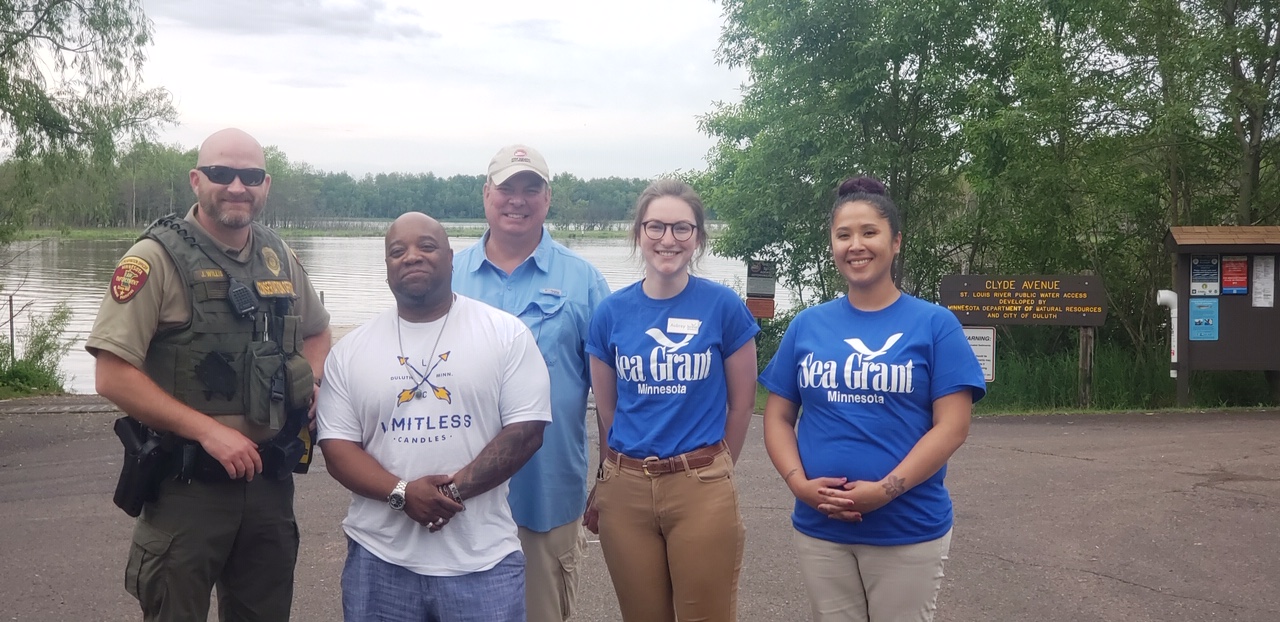
By Matt Doll, Minnesota Environmental Partnership
At this time of year more than any other, Minnesotans’ connection with water is visible throughout our state. Many of the over 800,000 boats registered in our state will be taking to the lakes and rivers, in addition to those brought by visitors from other states. Much larger vessels continue to dock at the Port of Duluth-Superior, the largest port in the Great Lakes.
These vessels, large and small, are a significant part of Minnesota’s economy. But their voyages from other waters to Minnesota’s shores have contributed to a growing challenge: aquatic invasive species.
Aquatic invasives – often referred to collectively as AIS – present a threat to Minnesota’s native species of fish, plants, and other wildlife. Invasive plants like Starry Stonewort spread and replace native plant life in lakes, reducing suitable habitat for aquatic animals. Zebra mussels implant themselves on docks and intake pipes and outcompete native animals for food, while also creating problems for cities that draw water from those lakes. Sea lampreys feed parasitically on native fish, drastically reducing native populations. Invasive carp can harm both aquatic plants and the water quality of the lakes they infest.
Many such species were originally carried into the Great Lakes basin in the ballast water of oceangoing ships. The ships took on water in other regions of the world, then discharged some of that water – and the critters within – into the Great Lakes watershed. And smaller boats transported over land carried these species into lakes in other parts of the basin and other watersheds entirely.
The Duluth area is often the first place that these species are detected in Lake Superior, thanks to the work of citizen volunteers and scientists (Like the DNR and Sea Grant employees in the picture above.)
Because of this spread, we’ve long expected boaters to clean and flush out their boats to prevent the spread of invasives from lake to lake. MEP’s Northeast Minnesota Organizer Stephan Witherspoon joined a crew helping boaters do the right thing at a Duluth boat launch. Fortunately, we’re beginning to move forward on requiring similar protections for oceangoing vessels, like those that dock in Duluth.
As we reported in November, Congress passed the Vessel Incidental Discharge Act, known as VIDA. VIDA began as a deeply problematic bill that would have rolled back protections for our lakes and misused federal authority. But thanks to advocates, including MEP and allies, from around the Great Lakes region, VIDA was strongly improved to establish real protections against ballast water discharges that threaten the Great Lakes, and provides funding for programs to monitor and tackle this threat.
We know that progress can be achieved – the US and Canada have successfully reduced sea lamprey populations in the Great Lakes by 90%, protecting native species and the communities that rely on fishing in these lakes. By continuing and scaling up monitoring, prevention, and investments in cleaning up our waters (like those of the Great Lakes Restoration Initiative) we can help halt and even roll back the spread of invasives in the Land of 10,000 Lakes.